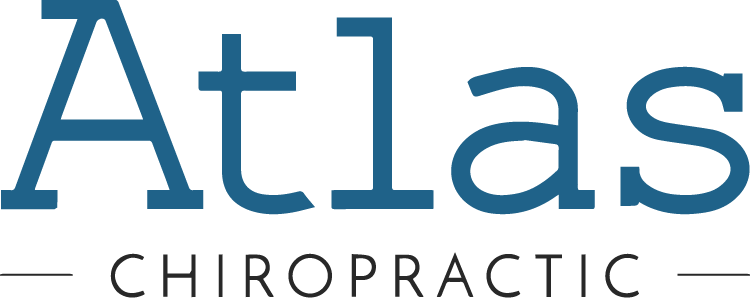
Vertigo Specialist In Boulder CO
Vertigo—a whirlwind of discomfort: nausea, headaches, dizziness, and loss of balance, disrupting everyday life. Conventional treatments often skim the surface of symptoms instead of targeting the underlying cause.
Specific vertigo treatments are crucial. Often, it’s your cervical spine at play. Neck pain, past injuries, head trauma, or fatigue might contribute to your vertigo. At Atlas Chiropractic, Dr. Alison’s expertise is tailored to treat vertigo and related issues without spinal adjustments.
Vertigo Doctor In Colorado
It can be frustrating trying to find a doctor in Colorado that is a specialit in vertigo and dizziness. The doctors at Atlas chiropractic have over 15 years of experence treating vertigo and helping people get relief from dizziness. If you have had little to no success with other medical intervention, please call our office or click here to schedule a consultation.
Recognizing Vertigo's Impact
The world spins, panic takes hold. Vertigo can ambush plans, lasting for days, months, or even years. Recognize these symptoms?
- Anxiety
- Dizziness
- Double vision
- Spinning sensation
- Hearing issues
- Balance loss
- Unusual eye movements (Nystagmus)
- Nausea, vomiting, and more
These disruptions make daily tasks daunting. But there’s hope.
The consultation process is a key part in the development of the care plan. Knowing a patients’ history is of the utmost importance as this allows the doctors to further understand what each individual patient needs. Everyone is unique and their care is unique too. Both past and current issues will be discussed and any questions that both the doctor and patient have for each other will be asked and answered.
During this time, the approximate pricing and duration of the care plan will be discussed, as a physical assessment of the patient and x-rays still need to be performed in order to gain a better understanding of the patient’s needs.
Common Questions
What is vertigo?
Vertigo is described as the sensation that you or your surroundings are spinning despite there being no movement. This is often confused with lightheadedness, which is the feeling that you are going to faint. To make a comparison, most people have been dehydrated at some point in their life and sometimes, but not all the time, that can bring on lightheadedness.
Why do I have vertigo?
Vertigo can have various causes, three major ones being: inner ear problems, central nervous system disorders and head injuries.
Inner Ear Problems
The inner ear has a lot of control over the body’s equilibrium and when issues arise, problems with balance can occur. There are multiple inner ear problems that exist; however, the two most common problems that we see at the office are benign paroxysmal positional vertigo and Meniere’s disease.
Benign Paroxysmal Positional Vertigo
Benign paroxysmal positional vertigo (BPPV) occurs when small calcium canaliths dislodge themselves and then move into the semicircular canals. With this condition, the vertigo typically occurs in certain positions, hence the name positional vertigo. Upper cervical chiropractic care can help with the vertigo because as we perform low velocity adjustments on the uppermost region of the spine it allows for the nervous system to function better.
Another way that this can be helped, in addition to upper cervical chiropractic care, is by using the Epley Maneuver, which is something that our office is trained to perform through their schooling. This maneuver consists of moving the head into a series of positions to encourage the canaliths to return themselves to the position in the ear that they can be absorbed (the utricle.) During this procedure the doctors are generally able to determine the side of the problem based off of results during the maneuver. The vertigo will increase during the procedure as the head is moved around, but that is part of figuring out where the issue is. This can also help determine if canaliths are contributing to the vertigo.
Meniere’s Disease
Meniere’s Disease is recognized by two major symptoms: vertigo and tinnitus (ringing in the ears.) There can also be associated hearing loss and a feeling of fullness/pressure in the ears. Unlike BPPV, the vertigo associated with Meniere’s is often sudden and severe with no correlation to position. These attacks can last for several minutes to hours.
Upper cervical chiropractic can help with these symptoms because as we perform adjustments on the uppermost part of the neck, it aids in relieving irritation of the nerves caused by spinal misalignments. However, it is recommended to have a comprehensive care team to assure that there isn’t another cause for the patients current symptoms.
Central Nervous System Disorders
The central nervous system tends to be the root cause of many issues that arise in the body. One disorder that we see frequently in the office are migraines. Many may not associate these with being rooted in the central nervous system, but neurovascular theory is noted as being a possible cause for migraines. This means that migraines are generally thought to be caused by irregular brain activity causing a change in blood flow. This change is generally an initial constriction followed by a dilation. Such changes in blood flow are thought to cause the migraine symptoms.
A common type of migraine that causes vertigo is known as a vestibular migraine. This is because they experience vestibular symptoms, such as vertigo. The central nervous system comes in as the brainstem (a part of the central nervous system) has a major role in things like balance, which is related to vertigo. And the reason that the office can help with these symptoms is that upper cervical chiropractic focuses on this region when it comes to the low velocity adjustments that are performed. Relieving nerve interference in this region has the biggest impact on the nervous system and body as a whole.
Cracking
Social media often glorifies chiropractic into a practice filled with cracks and ASMR relief. But, the idea that good chiropractic needs “cracks and pops” is a fallacy. Whether an adjustment generates a sound or does not generate a sound has no correlation to how good an adjustment is. The doctors are able to determine if there was the necessary movement through various post-adjustment checks–two major ones in the office being leg checks and thermography scans. The techniques that Dr. Rimes and Dr. Bremner practice, called Toggle and Knee-Chest, often causes little to know “popping” to occur. This is due to the fact that these techniques put the body through less torsion and force than other techniques.
Does it hurt?
Videos of chiropractic adjustments can sometimes make viewers feel uneasy about getting adjusted. They can sometimes wonder if the adjustments hurt, but they should not cause any intense amount of pain. There can be some tenderness or soreness associated with chiropractic adjustments. When there are regions of the spine that are especially distressed, contacting that region can cause soreness as it is more sensitive to pain and touch. When there are tender regions, that can lead to tender adjustments. Most of the time, as we get deeper into care, the tenderness starts to decrease or go away.
Do I have to go forever?
A big question when care is started is if a person needs to go forever. This is false. When care starts the appointments will be closer and more frequent. Most of the time, for chronic cases, the schedule will consist of 2-3 times a week for the first 3-4 weeks. Followed by 1-2 times a week, once a week, bi-weekly and then monthly progression. By this point, the care plan is usually over and the patient graduates into wellness care. Wellness care is generally anywhere from once a month, once every two months, once every three months or as needed. Maintaining a solid care plan and being dedicated to your healthcare is very critical when it comes to seeing results. A comparison could be starting a new eating lifestyle or starting to exercise–it takes time and dedication.
Are there any side effects?
Yes, there can be side effects from adjustments. Common side effects, especially in new patients, include muscle soreness, tiredness, and headaches.
Muscle Soreness
Muscle soreness can occur after adjustments because as the bones experience changes in alignment, the soft tissues that connect to them can become sore. This experience is similar to getting a massage or other work done on soft tissue. The body needs time to adjust to the changes it is going through. This soreness usually subsides in a matter of days and tends to go away the deeper into the care plan you get. Various things can be done to help this soreness subside like a warm bath with epsom salt and rest. There should not be any extreme pain.
Tiredness
Being tired after an adjustment is also a very common side effect. As the body goes through changes and starts to realign itself it can become exhausted. This is common in both new patients and seasoned chiropractic patients and does not always occur after several visits. As the chiropractic adjustments help the sympathetic (fight of flight) nervous system calm down the body tends to be tired after being in that excited state for so long. In fact, most of the time patients state that they can take a very good nap or sleep very well at night after their adjustments.
Do you offer any other types of care?
Yes. Dr. Rimes offers cupping and mechanical massage in addition to chiropractic care. There are also two massage therapists located in the office. Chiropractic care itself can lead to great results, but combining it with other forms of holistic care can lead to even better results, especially when it comes to keeping things together long term.
Dr. Rimes and Dr. Bremner are committed to providing elite care to all patients that come in. The care is tailored to each patient and the doctors only adjust the patient when and where it is needed. No adjustments will be made if an adjustment is not necessary. The doctors recognize the importance of communication and education and are transparent when it comes to answering questions. With time, care, consistency and a little bit of teamwork, the office strives to help those that walk into the office reach their health goals and live a better life.
Resolving Vertigo
At Atlas Chiropractic, we go beyond inner ear concerns to focus on the spine and nervous system. Our goal is to restore equilibrium by identifying and removing obstacles that contribute to vertigo, neck pain, and headaches.
Understanding the Causes
While inner ear issues are common culprits, spinal misalignments can also trigger vertigo. Misaligned joints create confusion in the nervous system, leading to dizziness and discomfort. Our personalized approach takes into account your lifestyle and health, offering targeted relief.
Breaking the Cycle of Misdiagnosis
Vertigo is often overlooked or misunderstood, causing significant disruption for those experiencing it. Dr. Alison Bremner’s expertise in neck-related vertigo brings relief to many in Boulder, Colorado.
Chiropractic Solutions for Vertigo
- Addressing the Root Issues
- Chiropractic therapy is gaining recognition for its effectiveness in tackling the core problems of vertigo.
- Managing Vertigo with Atlas Chiropractic
If vertigo disrupts your life, Atlas Chiropractic offers tailored solutions. From specialized therapies to precise techniques, take control of your health journey.
Schedule an Appointment Today
Vertigo can disrupt your life, causing nausea, headaches, and dizziness. Atlas Chiropractic specializes in vertigo treatment, linking it to neck issues like old injuries or fatigue.
Dr. Alison and Dr. Lindsey offer tailored solutions based on cervical anatomy, aiming to restore balance and wellness.
Experience relief from vertigo symptoms—schedule an appointment today! Conveniently located at the intersection of 23rd Street and Canyon Blvd, Atlas Chiropractic serves Boulder and the surrounding areas, including Erie and Superior.
Reach out today by contacting (303) 442-5911 to schedule a consultation and take the first step toward a pain-free life.
Schedule your FREE 15 minute consultation with Atlas Chiropractic
Please contact us using the form below and we will be in touch as soon as possible.


